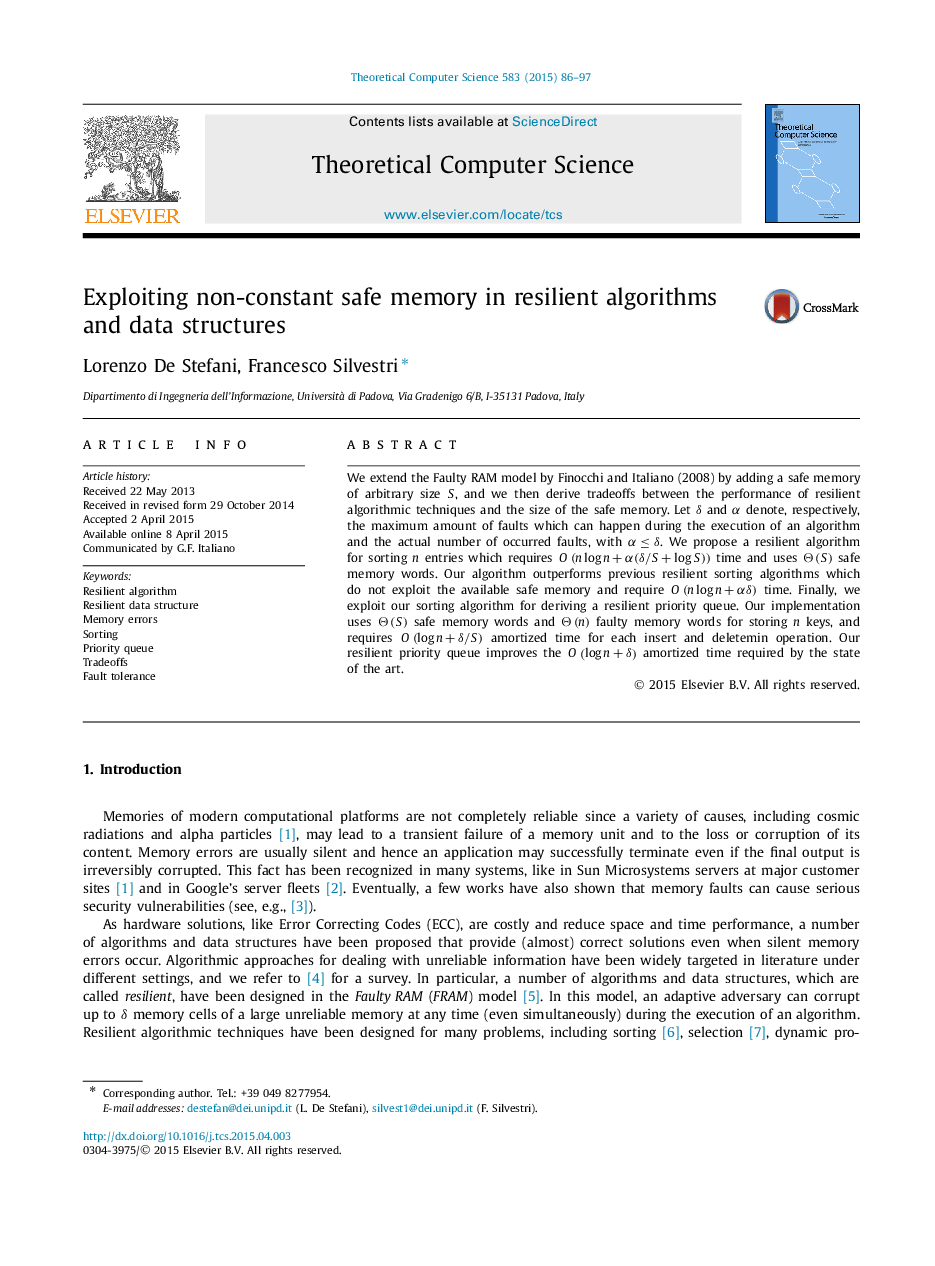| Article ID | Journal | Published Year | Pages | File Type |
|---|---|---|---|---|
| 437844 | Theoretical Computer Science | 2015 | 12 Pages |
•We study tradeoffs between algorithmic resiliency and hardware resiliency.•We extend the Faulty RAM (FRAM) model by adding a safe memory S which is immune to corruptions.•We propose a resilient sorting algorithm requiring O(nlogn+α(δ/S+logS))O(nlogn+α(δ/S+logS)) time.•We propose a resilient priority queue data structure requiring O(logn+δ/S)O(logn+δ/S) amortized time per operation.
We extend the Faulty RAM model by Finocchi and Italiano (2008) by adding a safe memory of arbitrary size S, and we then derive tradeoffs between the performance of resilient algorithmic techniques and the size of the safe memory. Let δ and α denote, respectively, the maximum amount of faults which can happen during the execution of an algorithm and the actual number of occurred faults, with α≤δα≤δ. We propose a resilient algorithm for sorting n entries which requires O(nlogn+α(δ/S+logS))O(nlogn+α(δ/S+logS)) time and uses Θ(S)Θ(S) safe memory words. Our algorithm outperforms previous resilient sorting algorithms which do not exploit the available safe memory and require O(nlogn+αδ)O(nlogn+αδ) time. Finally, we exploit our sorting algorithm for deriving a resilient priority queue. Our implementation uses Θ(S)Θ(S) safe memory words and Θ(n)Θ(n) faulty memory words for storing n keys, and requires O(logn+δ/S)O(logn+δ/S) amortized time for each insert and deletemin operation. Our resilient priority queue improves the O(logn+δ)O(logn+δ) amortized time required by the state of the art.
